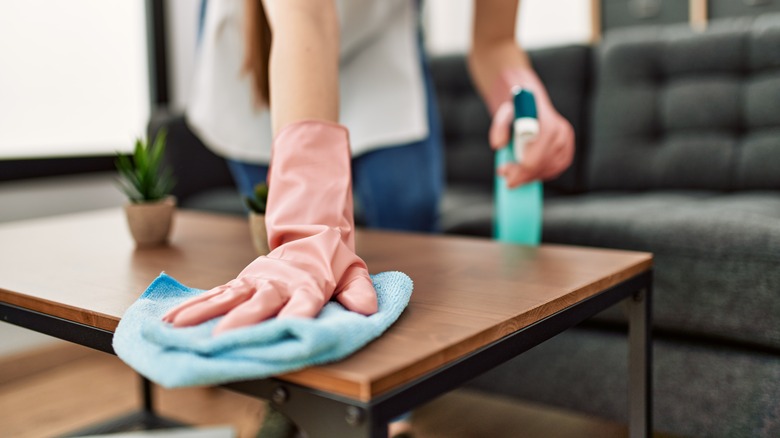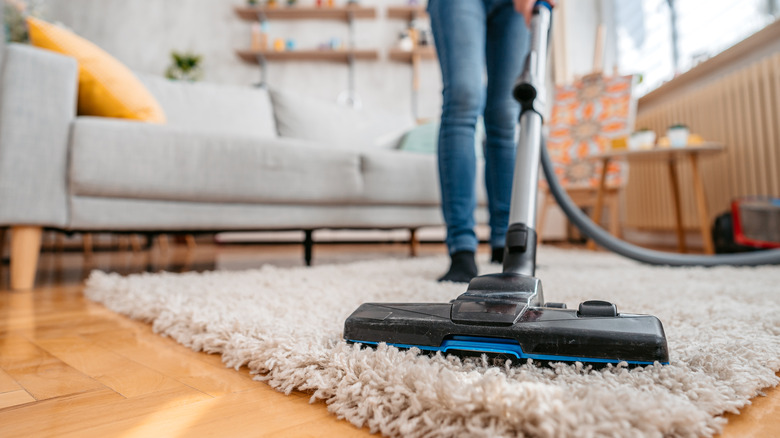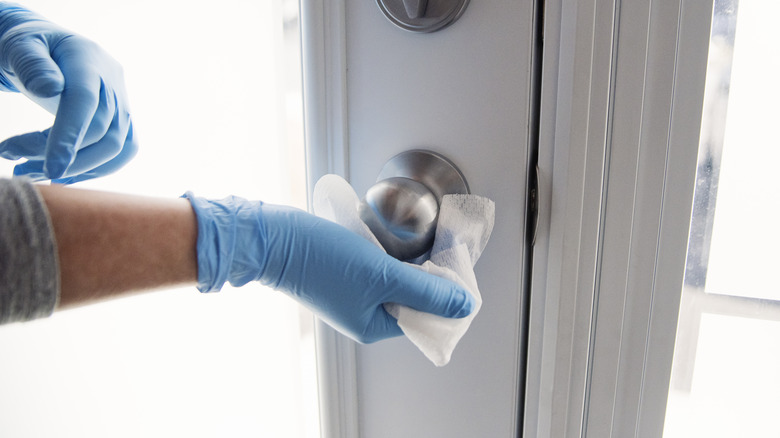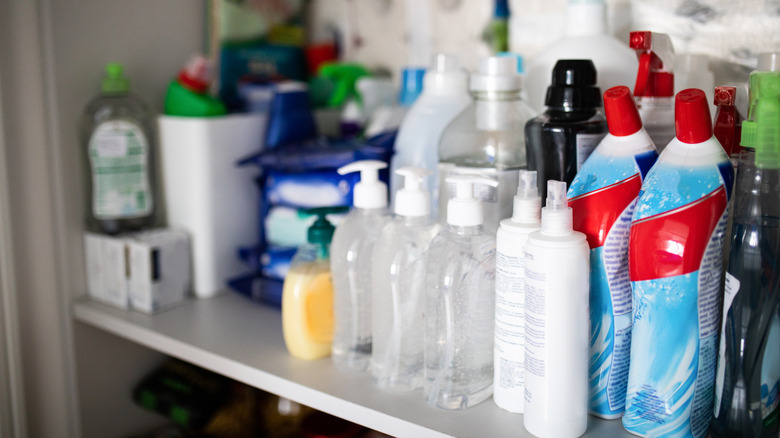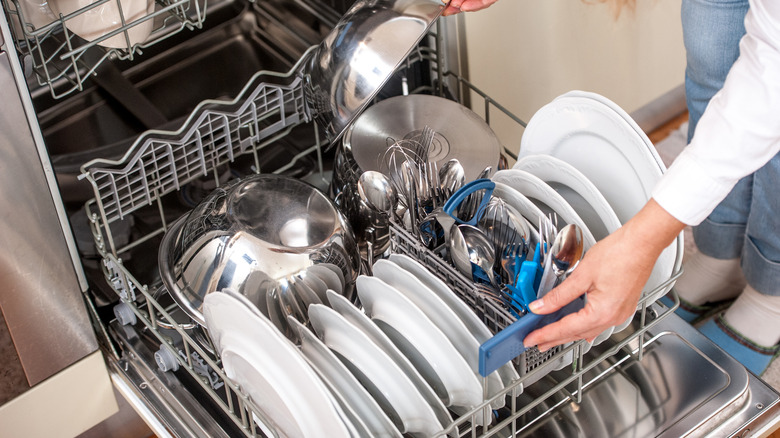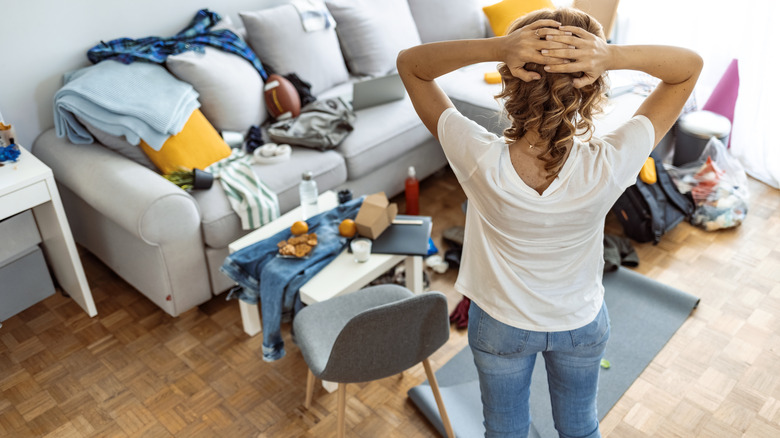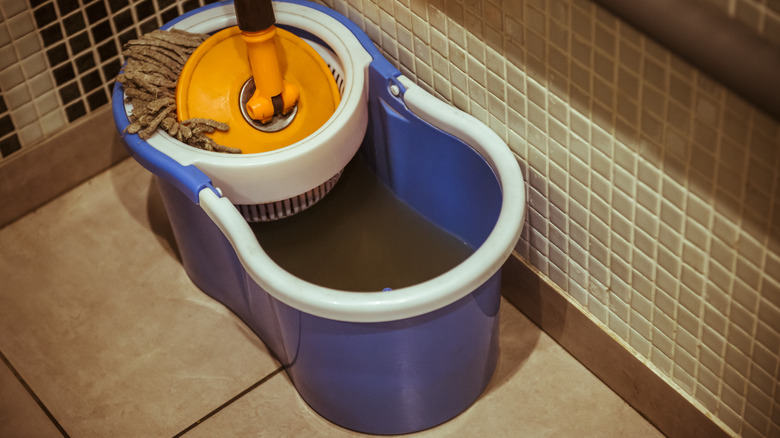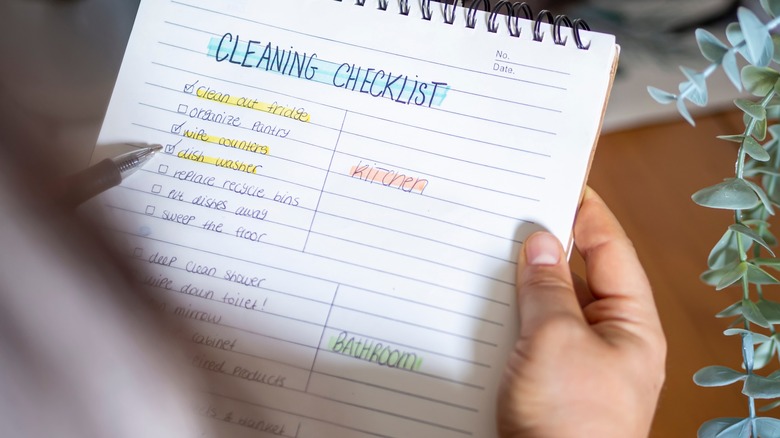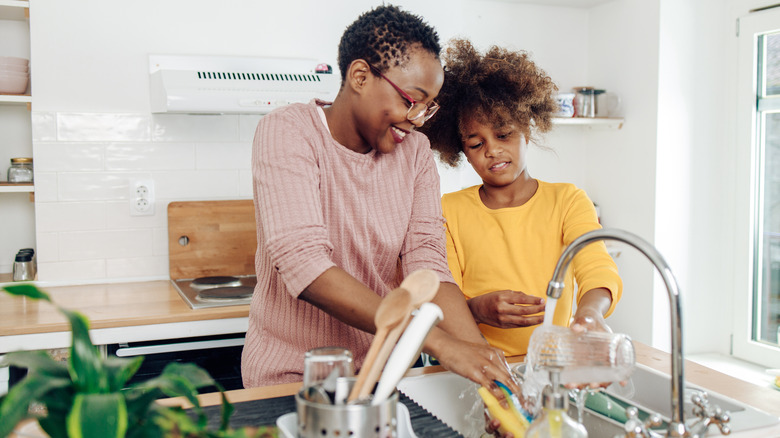7 Terrible Cleaning Habits You Need To Ditch ASAP (And 3 Good Habits To Adopt)
Cleaning is a necessity for both your family's physical and mental well-being. Yet no matter what tricks you might use to try to make cleaning fun, it's still a chore that takes up time you might rather spend doing something else. While cleaning can seem overwhelming and time-consuming, following terrible cleaning habits can inadvertently make the situation worse. This also includes taking shortcuts, which might result in making your home less clean than it seems, and creating more work for yourself.
Now's the time to ditch some of the worst cleaning habits that may be making your living environment more stressful, and far less clean. Consider working on addressing one bad habit at a time until you've built a successful cleaning routine. In the meantime, it's also important to utilize simple yet effective strategies you can start doing daily right now to help tidy up your home and create less work and stress down the line.
Vacuuming too quickly
Regular vacuuming not only removes dirt and dust from your rugs and carpeting, but it can also improve indoor air quality and reduce allergens. However, if you're rushing the process, you and your family may not fully reap these benefits. A quick sweep is a common vacuuming mistake that ultimately leaves dirt, pet hair, and dust behind. Plus, if you're running your vacuum in a haphazard manner in the middle of the room, you're not cleaning up any debris or dust that can buildup around baseboards and corners in your room.
Instead, vacuum slow and intentionally, making sure the machine runs over every bit of carpeting or fabric at least once. It's also a good idea to clean baseboards and corners with vacuum attachments before you run the machine across the rest of the floor. This way, you can grab any bits of dirt, hair, or dust that might come loose during the process. Slowly work your way from the furthest corner of the room towards the entrance, so you can ensure you sweep every spot.
Relying on commercial disinfectants or sanitizers for cleaning purposes
For a quick cleaning job, you may reach for whichever commercial product you have available. However, it's important to make sure that you're actually using a cleaner if you are indeed trying to clean up surfaces, such as kitchen counters, bathtubs, and toilets. There are key differences between cleaners, disinfectants, and sanitizers. You may think these can be used interchangeably, but this is a common error.
If you're looking to clean up dirt, stains, and debris, use soap and water, or consider a commercial cleaning product for tough jobs. Disinfectants and sanitizers, on the other hand, are designed to kill germs, such as viruses and bacteria. Commercial disinfectants are good to use on germ-filled surfaces, such as doorknobs, light switches, and toilets, but you need to leave the product on hard surfaces for at least 30 seconds. According to WebMD, the timing depends on the product, with some requiring 10 minutes of saturation before being wiped off. Commercial sanitizers also don't work to clean up dirt, but they can still reduce germs on common surfaces. When someone in your house has been sick, use a disinfectant.
Mixing cleaning products
Aside from using cleaning, disinfecting, and sanitizing products for their intended purposes, it's also important to not mix cleaning products together. In mild scenarios, combining products simply won't work. However, in more dangerous cases, mixing certain household chemicals can be hazardous to your eyes, skin, and lungs. Certain combinations may even be deadly.
Your best bet is to use one cleaning product at a time. For example, if you're using a bleach-containing commercial spray cleaner in the bathroom, stick with that product only. It's also a good idea to be aware of the types of chemicals that should never be mixed together. Bleach and ammonia are one of the most dangerous combinations to steer clear of, as they can create a chlorine gas that may lead to fatal asphyxiation. Other dangerous combinations include bleach with vinegar, bleach with rubbing alcohol, vinegar with hydrogen peroxide, and vinegar with baking soda.
Overloading your dishwasher
If you have a dishwasher, it's a good idea to put away dirty dishes immediately after meals so they don't pile up in your sink. You may even consider running it in regular intervals, such as every night, so that way you don't forget to use it. Depending on the brand, some modern dishwashers are even equipped with delay timers so you can load it, but then let it run at a designated time of your choosing. What you should not do, however, is overload the dishwasher with too many dishes. Not only will you likely end up with dishes that don't get cleaned properly, but they may also be at risk of breaking. Putting too many items in your dishwasher can also cause leaks from improper water dispersal, as well as damage to spray arms inside the appliance.
Overfilling your dishwasher is a common mistake people make with this cleaning appliance, but there are steps you can take to avoid potential dirty dishes and leaks. First, make sure any bulky items are placed along the sides of your dishwasher. Load utensils, bowls, cups, and plates in areas they can nest in without sticking up or falling out of place. Mixing and matching different sizes of dishes may seem like it takes up more room in your dishwasher, but this method ensures a better clean since the dishes are less likely to stick together.
Waiting to declutter until after you clean
Decluttering involves the act of removing items from a space, while cleaning consists of getting rid of dirt, dust, and debris. While it may be tempting to try and save time by completing both chores at the same time, this is a common mistake people make when trying to declutter or clean. In fact, doing both at once only sets you up for more frustration because these are two different tasks. Plus, you're likely to actually save time by decluttering before you clean because the process will be more efficient. (For example, it's nearly impossible to give carpets a proper vacuum if they have piles of clothing, scattered toys, or boxes on them.)
Instead, make decluttering a priority before you clean. Pick up toys and other loose items, and get rid of anything that doesn't belong in the space. In fact, if you're in a situation where piles of clutter are simply overwhelming and occurring in every room in the house, consider pushing off your cleaning schedule and get to work on decluttering first. You can also make a checklist of items that ought to be prioritized. These include expired food in your pantry, old medications or skin care products, paperwork, and unused toys. Ironically, you may even need to declutter old cleaning products. Get rid of anything that's old, expired, or empty.
Using dirty cleaning tools
While you need sponges, dusters, mops, and other tools to properly clean your house, these will do little good if they are dirty. Examples include grimy sponges and mops, brushes with dirty bristles, germ-filled toilet scrubbers, and dust-filled vacuums. Not only do such items do a poor job of cleaning, but unclean cleaning tools may inadvertently spread germs and dirt. You may also find yourself doing more work than necessary.
If any of your cleaning tools are dirty, you don't necessarily have to throw them out right away. Instead, you can clean your cleaning tools. Not only does it help them stay sanitary, but regular cleanings also help your tools maintain their optimal condition. This can be as simple as rinsing your mop in clean water and washing dusters with soap and water after each use. To keep your vacuum in top shape, clean the dust out of any attachments with a damp cloth, and be sure to empty the bag or canister every time you use it. For smaller cleaning tools, sanitizing is key to keeping them clean and effective. Disinfect toilet brushes, place sponges in the microwave for 60 seconds, and wash all rags after every use.
Not having a cleaning routine or schedule
When it comes to having to clean your house, it's easy to procrastinate or put off tasks to whenever you feel like getting to them. However, failing to put cleaning on your daily, weekly, and monthly calendars usually results in these tasks getting done much later, if at all. Furthermore, by not scheduling regular cleanings, the messes and clutter ultimately build up, which in turn creates even more work for yourself.
The time to create an effective cleaning schedule is now. Create a checklist by section of your house, detailing all the items that need to get done each week. You also have some flexibility in the way you build your family's cleaning schedule. For example, some people find it easier to do all their deep cleaning one day a week, while others like to break up tasks throughout the week. For example, you can pick one day a week to focus on deep-cleaning the kitchen, another day to vacuum the house, and another to clean bathrooms. You can also create a checklist of daily tasks for you and your family, such as doing the dishes, folding the laundry, and putting away toys. If you don't care for checklists, consider a time-based method, where you clean as many areas as you can in 30 minutes or longer per day. There's no wrong way to create a cleaning schedule, but the key is to make sure you stick with it until it becomes routine.
Three cleaning habits you can adopt right now
Aside from getting rid of bad cleaning habits, there are also simple habits you can adopt right now. These involve daily tasks that will make your home cleaner and healthier, but will also make the process of deep cleanings much easier.
Start with the following steps:
- Wash your dishes immediately after eating. This includes loading the dishwasher and doing any dishes that require washing by hand. While it's tempting to wait until later, chances are you may get tired or forget to do them, leading to piles of dishes waiting for you in the sink the next day.
- Tidy up a little bit throughout the day. Tackling small amounts of clutter throughout the day, every day, can help prevent large amounts of clutter from piling up. Examples include piles of mail, receipts, toys, and pet items. Also, remove any trash and recycling from your home as soon as your indoor cans get full.
- Do a load of laundry. Dirty laundry piles up quickly, especially if you have children. Make it a point to do at least one load of clothing, towels, or linens per day. Once these items are dried, fold them immediately instead of leaving them to pile up in a laundry basket.

